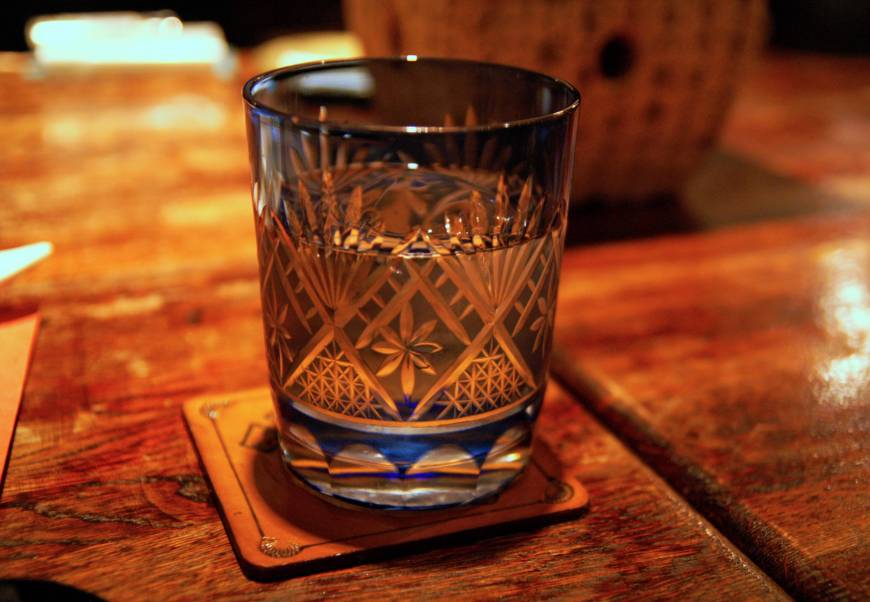Welcome to DU!
The truly grassroots left-of-center political community where regular people, not algorithms, drive the discussions and set the standards.
Join the community:
Create a free account
Support DU (and get rid of ads!):
Become a Star Member
Latest Breaking News
General Discussion
The DU Lounge
All Forums
Issue Forums
Culture Forums
Alliance Forums
Region Forums
Support Forums
Help & Search
Asian Group
Related: About this forumDistilling the mysteries of ‘shōchū’

by Melinda Joe
Special To The Japan Times
From my seat on the second floor of Shochu Zanmai, a bar specializing in Japan’s indigenous distilled liquor, I can see directly into the building across the street. The bar is located down a narrow alley a 10-minute walk from Tokyo’s Ikebukuro Station, and the close proximity of the surrounding buildings gives me a clear view of the neighbors. Through the window, I make out a group of Japanese men sitting around a low table next door, their arms raised in a toast. This scene of quotidian conviviality mirrors the atmosphere inside Shochu Zanmai, and I imagine that — like us — the men are drinking shōchū.
This thought occurs to me partly because of the Showa Era (1926-89) ambience of the neighborhood — along with the bar’s interior, with its tatami-mat floors and precariously steep staircase — which recalls the days of the first shōchū boom, in the ’80s, when legions of salarymen favored the clear liquor for long-haul drinking sessions. Shōchū has also been the focus of all of my attention for the past 30 minutes.
At Shochu Zanmai, we are literally surrounded by the stuff: the bar boasts over 300 varieties of the spirit, and plastic crates filled with bottles are stacked high along three of the four walls in the room where we are seated. Faced with so many choices, I would be lost on my own, but shōchū expert Christopher Pellegrini, who has kindly agreed to play the Virgil to my Dante, leads me through a tasting that reveals the drink’s astonishing diversity.
Pellegrini first selects three brands of imo-jōchū, a type of shōchū made from sweet potato. Tenguzakura has a toasted-grain aroma and hits my palate with a sharp, astringent kick, while Sakurai has a more delicate character: soft and smooth with a touch of sweetness. Satsuma Ishin differs completely from the previous two, with its expressive floral bouquet that smells strongly of roses. Next, Pellegrini pours me two distinct versions of kokuto (brown cane sugar) shōchū. First, a rare whisky-like specimen produced by Mankoi, and then a bright and grassy distillate by Sato no Akebono.
The seemingly infinite array of shōchū is what first attracted Pellegrini to the drink, and studying it over the past 13 years has only intensified his enthusiasm. He developed a fascination for the craft of brewing at an early age and worked at small beer brewery in his home state of Vermont when he was 18 years old. After moving to Japan in 2002, he was disappointed to discover that the craft beer trend had yet to take off here. Dissatisfied with the brews from the country’s four major producers that dominated the beer scene — Asahi, Kirin, Sapporo and Suntory — he turned his attention to sake and began exploring the offerings at a sake-centric izakaya (traditional Japanese pub) in western Tokyo. Within a year, he had exhausted the sake menu there, so one night he ordered a barley shōchū for the first time. Intrigued by the unfamiliar spirit, he asked for a second glass, and the proprietor poured him a imo-jochu. And that was when he had an epiphany: “I was amazed that both were shōchū because they were so completely different,” he recalls.
more...
http://www.japantimes.co.jp/life/2016/06/10/food/distilling-mysteries-shochu/
InfoView thread info, including edit history
TrashPut this thread in your Trash Can (My DU » Trash Can)
BookmarkAdd this thread to your Bookmarks (My DU » Bookmarks)
1 replies, 757 views
ShareGet links to this post and/or share on social media
AlertAlert this post for a rule violation
PowersThere are no powers you can use on this post
EditCannot edit other people's posts
ReplyReply to this post
EditCannot edit other people's posts
Rec (0)
ReplyReply to this post
1 replies
 = new reply since forum marked as read
Highlight:
NoneDon't highlight anything
5 newestHighlight 5 most recent replies
= new reply since forum marked as read
Highlight:
NoneDon't highlight anything
5 newestHighlight 5 most recent replies
Distilling the mysteries of ‘shōchū’ (Original Post)
yuiyoshida
Jun 2016
OP
Nitram
(22,801 posts)1. Not very popular with most Japanese these days except when mixed as a chuhai cocktail.
mugi-jochu in Nagasaki, kome-jochu in Kumamoto, imo-jochu in Kagoshima